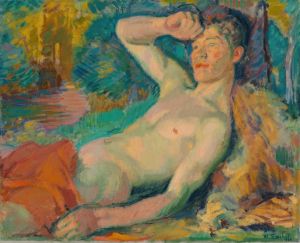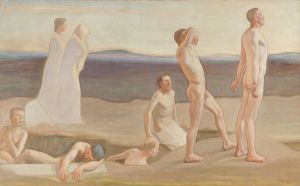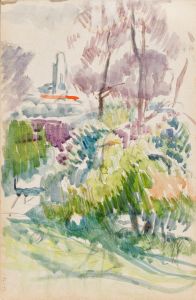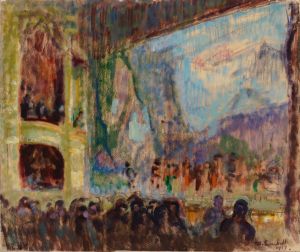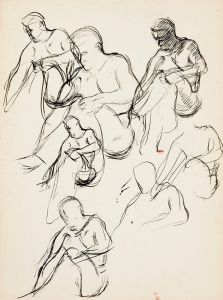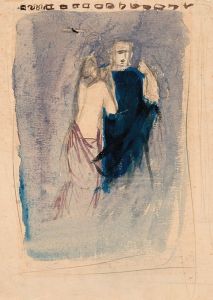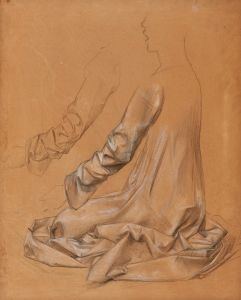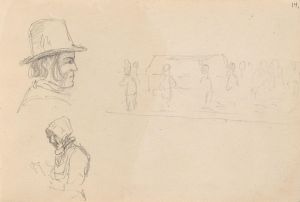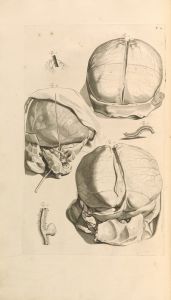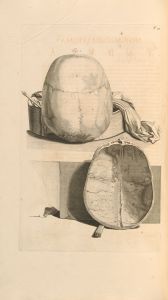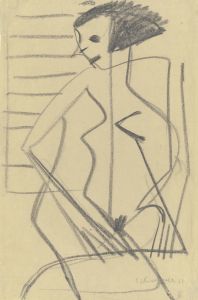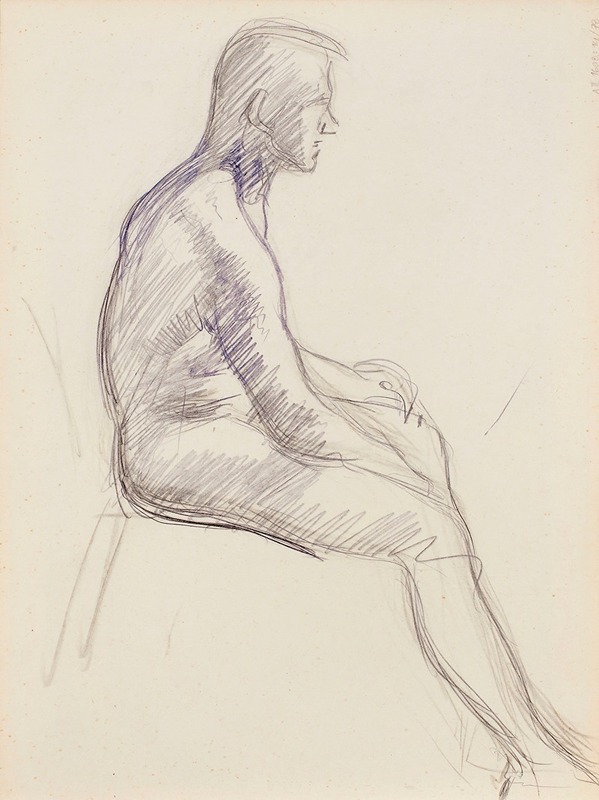
Istuva alaston mies, luonnos
A hand-painted replica of Magnus Enckell’s masterpiece Istuva alaston mies, luonnos, meticulously crafted by professional artists to capture the true essence of the original. Each piece is created with museum-quality canvas and rare mineral pigments, carefully painted by experienced artists with delicate brushstrokes and rich, layered colors to perfectly recreate the texture of the original artwork. Unlike machine-printed reproductions, this hand-painted version brings the painting to life, infused with the artist’s emotions and skill in every stroke. Whether for personal collection or home decoration, it instantly elevates the artistic atmosphere of any space.
Magnus Enckell's "Istuva alaston mies, luonnos" (translated as "Seated Nude Man, Sketch") is a work by the Finnish symbolist painter Magnus Enckell (1870–1925). Enckell is recognized as one of Finland's most prominent artists of the late 19th and early 20th centuries, known for his contributions to Symbolism and his exploration of themes such as human emotion, spirituality, and the human form.
This particular artwork, as the title suggests, is a sketch depicting a seated nude male figure. The piece is characteristic of Enckell's interest in the human body and his ability to capture its form with sensitivity and precision. While the work is a sketch, it reflects the artist's skill in rendering anatomy and his focus on the contemplative and introspective qualities of his subjects. Enckell often used the nude figure as a means of exploring universal themes of beauty, vulnerability, and the human condition.
Magnus Enckell was a central figure in the Finnish art scene during his lifetime. He studied at the Drawing School of the Finnish Art Society in Helsinki and later continued his education in Paris, where he was influenced by Symbolist and Post-Impressionist movements. His early works were often dark and introspective, but his style evolved over time to include brighter colors and a more decorative approach, particularly during his later career.
"Istuva alaston mies, luonnos" is an example of Enckell's earlier focus on the nude figure, which was a recurring subject in his oeuvre. The sketch format suggests that it may have been a preparatory study for a larger work or an independent exploration of form and composition. Enckell's treatment of the male nude was notable for its lack of overt eroticism, instead emphasizing a sense of calm and introspection.
The exact date of the sketch is not specified, but it aligns with Enckell's broader body of work that often featured studies of the human figure. The piece demonstrates his interest in the interplay of light and shadow, as well as his ability to convey a sense of stillness and thoughtfulness in his subjects.
Magnus Enckell's contributions to Finnish art have been widely recognized, and his works are held in major collections, including the Ateneum Art Museum in Helsinki. His legacy continues to be celebrated for its impact on Finnish Symbolism and its exploration of universal human themes.





